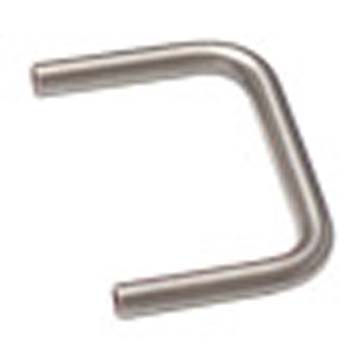Handles
Industrial handles are essential components used across various industries to facilitate efficient handling and manipulation of equipment, machinery, and tools. These handles provide ergonomic grips, enhancing operator comfort and control while minimizing the risk of fatigue and injury. In industrial settings, where precision and safety are paramount, the design and material choice of handles play a crucial role in ensuring smooth operations and optimal performance. In this comprehensive product description, we will explore the world of industrial handles, their types, materials, applications, and how they provide ergonomic solutions for efficient handling in diverse industrial environments.
What are Industrial Handles?
Industrial handles are specialized components designed to provide a secure and ergonomic grip for operators when handling machinery, equipment, and tools. They are typically attached to doors, panels, cabinets, drawers, and other moving parts, allowing for easy access and manipulation. Industrial handles come in various shapes and configurations, each tailored to meet specific handling requirements in different industries and applications.
Types of Industrial Handles
Industrial handles come in a wide variety of types, catering to diverse handling needs. Some common types include:
- Recessed Handles: Recessed handles are designed to sit flush with the surface, providing a streamlined appearance and preventing snagging on surrounding objects.
- Bar Handles: Bar handles are straight or curved handles that offer a comfortable grip and are commonly used on doors, cabinets, and enclosures.
- Flush Handles: Flush handles are mounted directly onto the surface and lie flat when not in use, making them ideal for applications with limited space.
- Lever Handles: Lever handles are designed to be easily operated with one hand, offering quick and effortless access to doors and cabinets.
- T-Handles: T-handles have a T-shaped design, allowing for a secure two-handed grip, commonly used on machinery and equipment.
- Foldable Handles: Foldable handles can be folded down when not in use, minimizing their protrusion and reducing the risk of accidental impacts.
- Knurled Handles: Knurled handles have a textured surface, offering a non-slip grip even in wet or oily conditions.
- Latching Handles: Latching handles incorporate a latching mechanism, securing doors and panels in place during operation.
Materials for Industrial Handles
Industrial handles are manufactured from a variety of materials, each chosen based on factors such as durability, strength, ergonomics, and environmental conditions. Common materials include:
- Stainless Steel: Stainless steel handles offer excellent corrosion resistance and strength, making them suitable for demanding industrial environments and outdoor applications.
- Aluminum: Aluminum handles are lightweight and corrosion-resistant, ideal for applications requiring ease of handling and reduced weight.
- Plastic: Plastic handles are lightweight and versatile, available in various colors and designs, and are commonly used in consumer products and light-duty industrial applications.
- Cast Iron: Cast iron handles are rugged and durable, suitable for heavy-duty industrial machinery and equipment.
- Zinc Alloy: Zinc alloy handles provide a balance of strength and cost-effectiveness, commonly used in industrial equipment and toolboxes.
- Rubber: Rubber handles offer a comfortable and non-slip grip, making them ideal for tools and equipment used in wet or oily conditions.
- Wood: Wood handles provide a classic and natural appearance, often used in furniture and vintage-style tools.
Industrial Handles Applications
Industrial handles find applications in a wide range of industries and settings, including:
- Machinery and Equipment: Industrial handles are essential for accessing machine doors, panels, and control levers, ensuring safe and convenient operation.
- Automotive: Handles are used in vehicle interiors and exteriors, providing easy access to doors, compartments, and trunks.
- Aerospace: Aerospace applications utilize handles for access panels and cockpit controls, where precision and reliability are crucial.
- Electronics and Enclosures: Handles are integrated into electronic enclosures, providing easy transport and access to sensitive equipment.
- Medical Devices: Medical equipment uses handles for easy handling and maneuvering during patient care and medical procedures.
- Transportation: Industrial handles are used on buses, trains, and ships, providing a secure grip for passengers.
- Manufacturing: Handles are employed in production lines and assembly stations to manipulate materials and components.
- Construction: Construction equipment and tools utilize handles for easy lifting and positioning.
- Storage Solutions: Handles are integrated into cabinets, drawers, and containers, facilitating easy access and organization.
Ergonomics and Safety
Ergonomics plays a critical role in industrial handle design, ensuring that the handles offer comfortable grips and minimize stress on the operator's hands and wrists. Well-designed handles reduce the risk of injuries and fatigue, enhancing worker productivity and safety. In safety-critical applications, handles may include features such as color-coded grips, tactile indicators, and anti-vibration properties to ensure quick and accurate handling, even in challenging environments.
Installation and Maintenance
Proper installation of industrial handles is essential to their functionality and durability. Handles should be securely attached to the surface, considering factors such as load-bearing capacity and vibration resistance. Regular maintenance, including inspections for wear and damage, is important to identify and address issues promptly, ensuring the handles' continued performance and safety.
Conclusion
In conclusion, industrial handles are the unsung heroes of efficient handling, providing ergonomic solutions for operators across industries. From simple bar handles to sophisticated lever and latching handles, each handle type serves a specific purpose, enhancing the functionality and safety of machinery, equipment, and tools. The choice of materials and ergonomic design are critical to achieving optimal performance and minimizing operator fatigue and injuries. Industrial handles continue to play a crucial role in improving workplace efficiency, safety, and overall productivity in various industrial environments.










